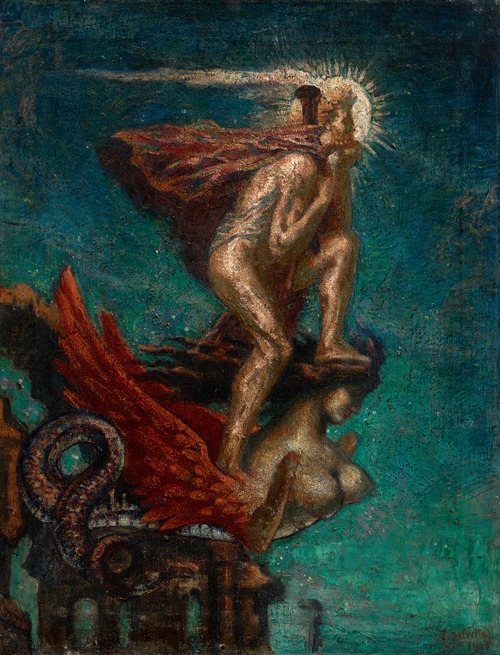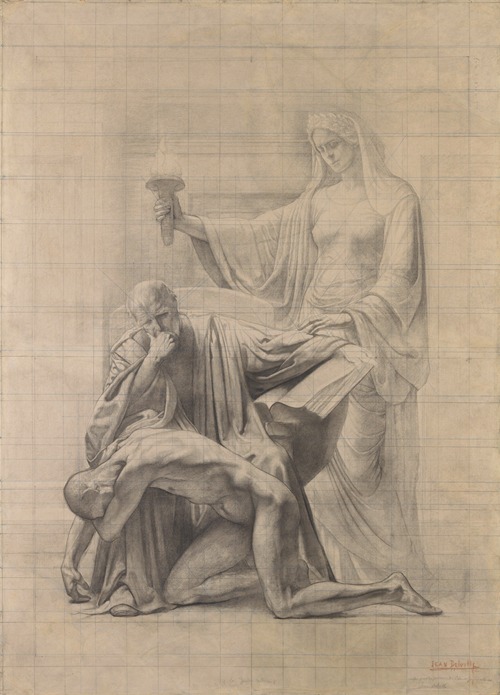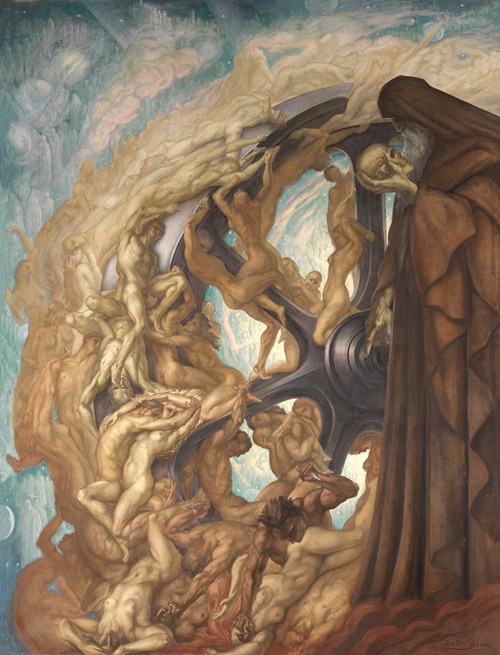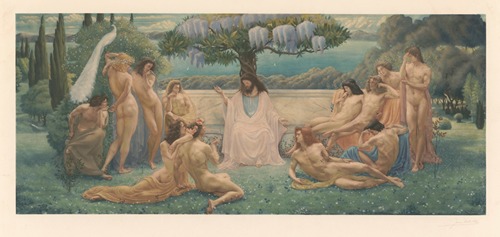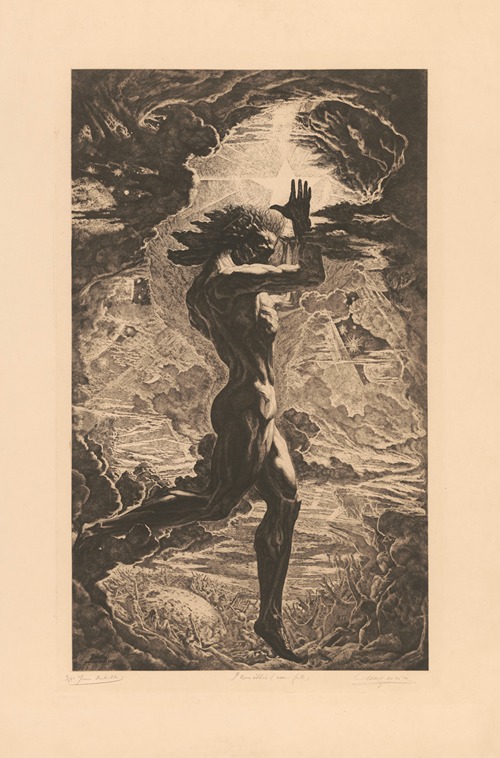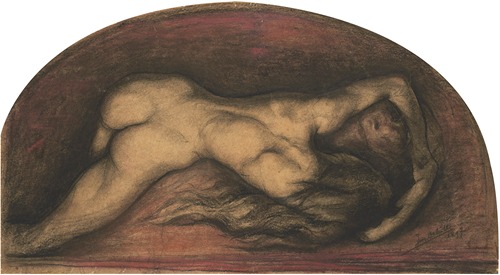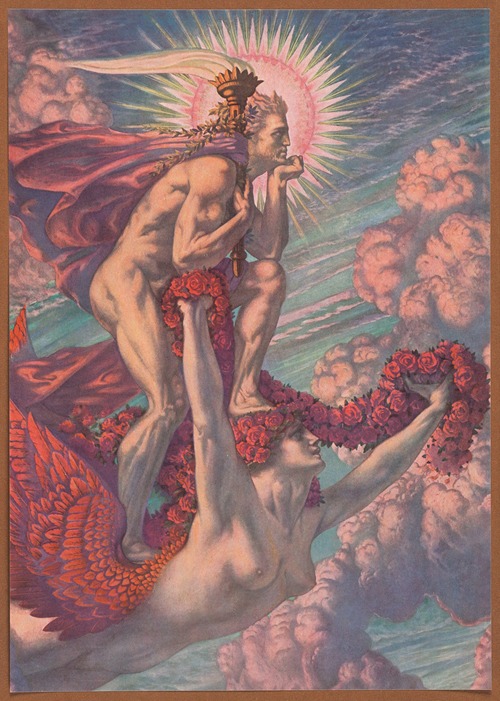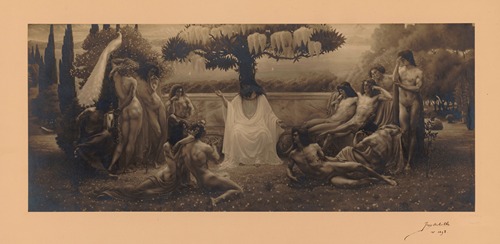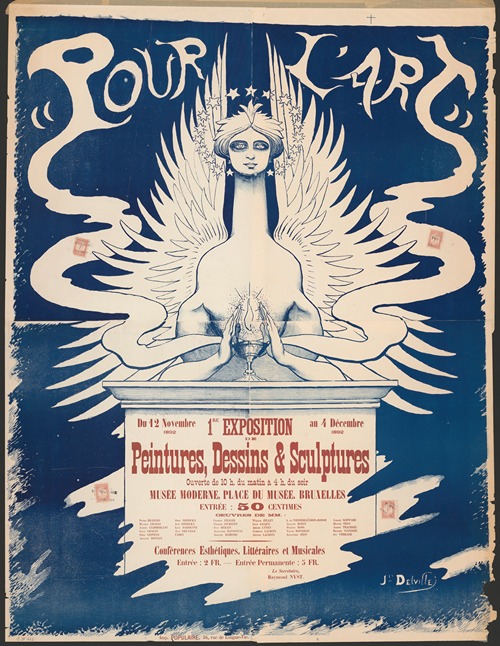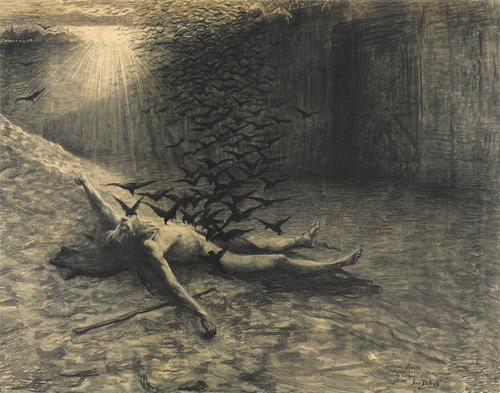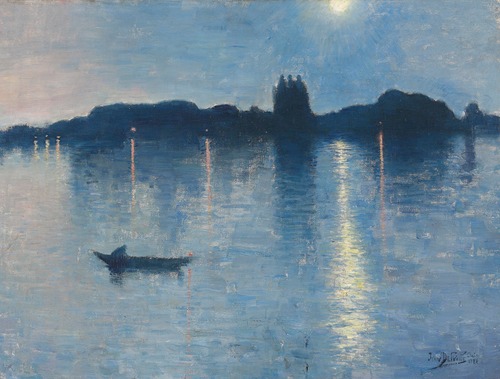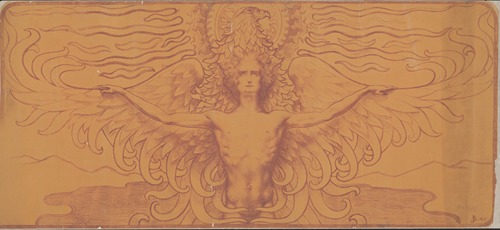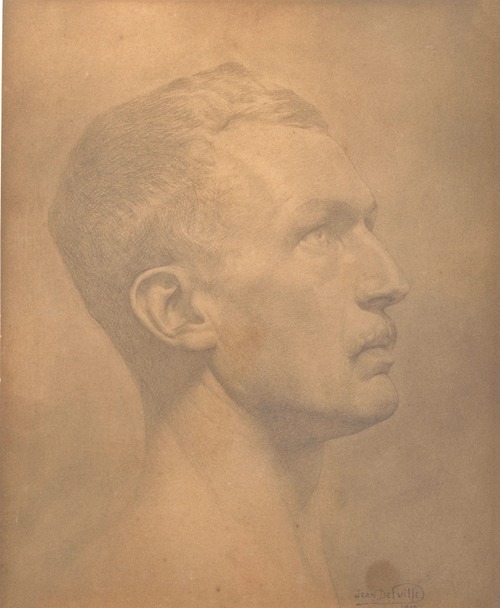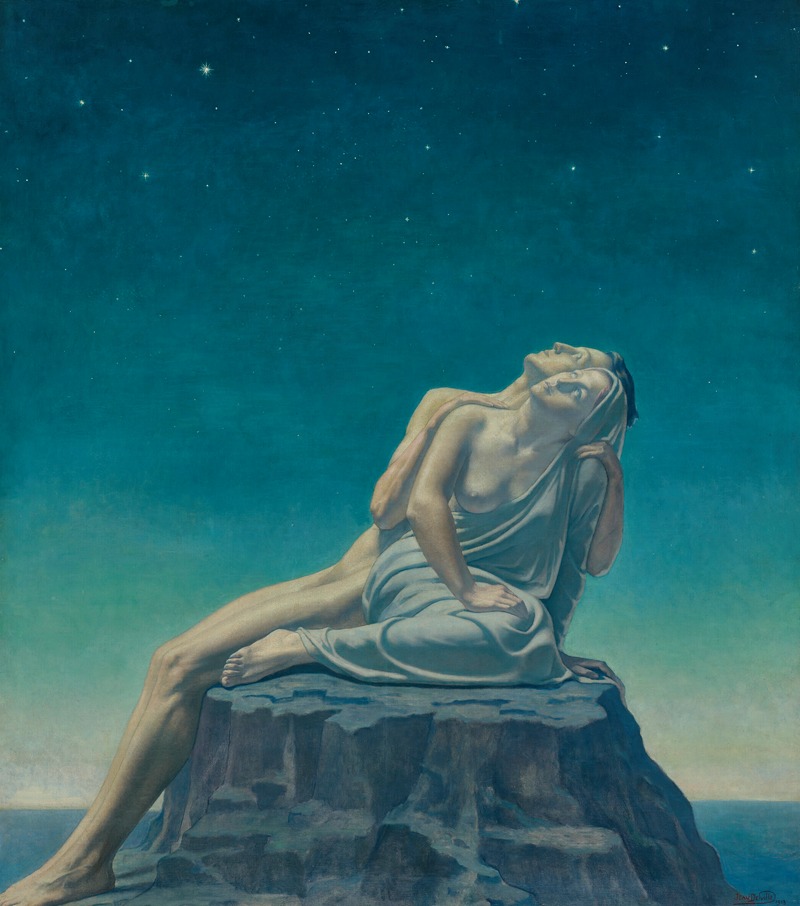
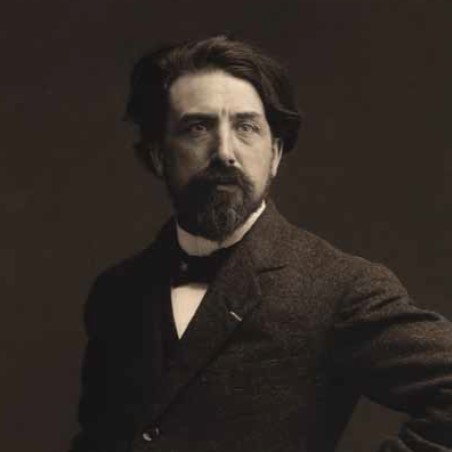
Jean Delville, born Jean Libert, was a Belgian symbolist painter, author, poet, polemicist, teacher, and Theosophist. Delville was the leading exponent of the Belgian Idealist movement in art during the 1890s. He held, throughout his life, the belief that art should be the expression of a higher spiritual truth and that it should be based on the principle of Ideal, or spiritual Beauty. He executed a great number of paintings during his active career from 1887 to the end of the second World War (many now lost or destroyed) expressing his Idealist aesthetic. Delville was trained at the Académie des Beaux-arts in Brussels and proved to be a highly precocious student, winning most of the prestigious competition prizes at the Academy while still a young student. He later won the Belgian Prix de Rome which allowed him to travel to Rome and Florence and study at first hand the works of the artists of the Renaissance. During his time in Italy he created his celebrated masterpiece L'Ecole de Platon (1898), which stands as a visual summary of his Idealist aesthetic which he promoted during the 1890s in his writings, poetry and exhibitions societies, notably the Salons d'Art Idéaliste.
Characteristically, Delville's paintings are idea-based, expressing philosophical ideals derived from contemporary hermetic and esoteric traditions. At the start of his career, his esoteric perspective was mostly influenced by the work of Eliphas Levi, Edouard Schuré, Joséphin Péladan and Saint-Yves d'Alveydre, and later by the Theosophical writings of Helena Blavatsky and Annie Besant. The main underlying theme of his paintings, especially during his early career, has to do with initiation and the transfiguration of the inner life of the soul towards a higher spiritual purpose. Specifically they deal with themes symbolising Ideal love, death and transfiguration as well as representations of Initiates ('light bringers'), and the relationship between the material and metaphysical dimensions. His paintings and finished drawings are an expression of a highly sensitive visionary imagination articulated through precisely observed forms drawn from nature. He also had a brilliant gift for colour and composition and excelled in the representation of human anatomy. Many of his major paintings, such as his Les Trésors de Sathan (1895), l'Homme-Dieu (1903) and Les Ames errantes (1942), represent dozens of figures intertwined in complex arrangements and painted with highly detailed anatomical accuracy. He was an astonishingly skilled draughtsman and painter capable of producing highly expressive works on a grand scale, many of which can be seen in public buildings in Brussels, including the Palais de Justice.
Delville's artistic style is strongly influenced by the Classical tradition. He was a lifelong advocate of the value of the Classical training taught in the Academies. He believed that the discipline acquired as a result of this training was not an end in itself, but rather a valuable means of acquiring a solid drawing and painting technique to allow artists freely to develop their personal artistic style, without inhibiting their individual creative personality. Delville was a respected Academic art teacher. He was employed at the Glasgow School of Art from 1900 to 1906 and as Professor of drawing at the Académie des Beaux-arts in Brussels thereafter until 1937.
He was also a prolific and talented author. He published a very great number of journal articles during his lifetime as well as four volumes of poetry, including his Le Frisson du Sphinx (1897) and Les Splendeurs Méconnues (1922). He authored more than a dozen books and pamphlets relating to art and esoteric subjects. The most important of his published books include his esoteric works, Dialogue entre Nous (1895) and Le Christ Reviendra (1913) as well as his seminal work on Idealist art, La Mission de l'Art (1900). He also created and edited several contemporary journals and newspapers during the 1890s promoting his Idealist aesthetic including L'Art Idéaliste and La Lumière.
Delville was an energetic artistic entrepreneur, creating several influential artistic exhibition societies, including Pour l'Art and the Salons de l'Art Idéaliste in the 1890s and later, the Société de l'Art Monumental in the 1920s which was responsible for the decoration of public buildings including the mosaics in the hemicycle of the Cinquantenaire in Brussels. He also founded the very successful Coopérative artistique, which provided affordable art materials for artists at the time.
